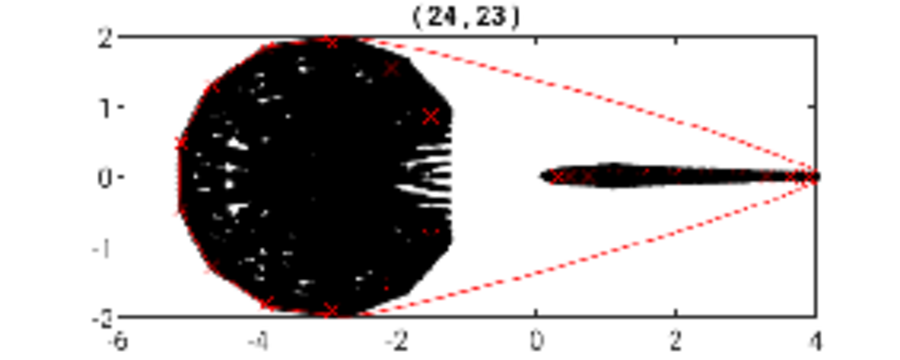Blogeintrag
Krylov type methods exploiting the quadratic numerical range

The quadratic numerical range W2(A) is a subset of the standard numerical range of a linear operator which still contains its spectrum. It arises naturally in operators which have a 2×2 block structure, and it consists of at most two connected components, none of which necessarily convex. The quadratic numerical range can thus reveal spectral gaps, and it can in particular indicate that the spectrum of an operator is bounded away from 0. We exploit this property in the finite-dimensional setting to derive Krylov subspace type methods to solve the system Ax=b, in which the iterates arise as solutions of low-dimensional models of the operator whose quadratic numerical ranges is contained in W2(A). This implies that the iterates are always well-defined and that, as opposed to standard FOM, large variations in the approximation quality of consecutive iterates are avoided, although 0 lies within the convex hull of the spectrum. We also consider GMRES variants which are obtained in a similar spirit. We derive theoretical results on basic properties of these methods, review methods on how to compute the required bases in a stable manner and present results of several numerical experiments illustrating improvements over standard FOM and GMRES.
zuletzt bearbeitet am: 26.09.2024

